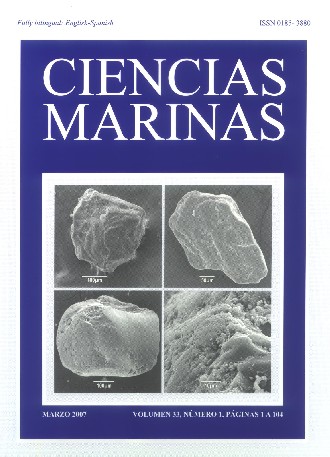Reproductive biology of the deep-sea asteroid Henricia abyssicola from the NE Atlantic Ocean
Main Article Content
Abstract
The reproductive biology of the North Atlantic asteroid Henricia abyssicola is determined in time series samples taken from 1250 to 1900 m depth in the Porcupine Seabight (NE Atlantic). The male-female ratio, gonadosomatic index (GI), pyloric caecum index (PCI), fecundity and oocyte size distribution were determined and the results were corroborated by histological examination of the gonads. This species is a gonochoric asteroid and the male-female ratio did not differ significantly from the equality. Oogenesis was asynchronous. The previtellogenic oocytes grow to a size of ~230 µm before undergoing vitellogenesis. Maximum oocyte size was ~970 µm. The ovary volume was mainly occupied by large vitellogenic oocytes (400–500 µm) at any time. There were no seasonal variations in GI, PCI and fecundity. There were, however, variations in the production of vitellogenic oocytes of H. abyssicola superimposed on the continuous reproduction. We suggest that H. abyssicola makes use of the energy source provided by the deposition of phytodetritus by storing it in the developing oocytes and that it might have the benefit of a facultative planktotrophic larva.
Downloads
Article Details
This is an open access article distributed under a Creative Commons Attribution 4.0 License, which allows you to share and adapt the work, as long as you give appropriate credit to the original author(s) and the source, provide a link to the Creative Commons license, and indicate if changes were made. Figures, tables and other elements in the article are included in the article’s CC BY 4.0 license, unless otherwise indicated. The journal title is protected by copyrights and not subject to this license. Full license deed can be viewed here.

